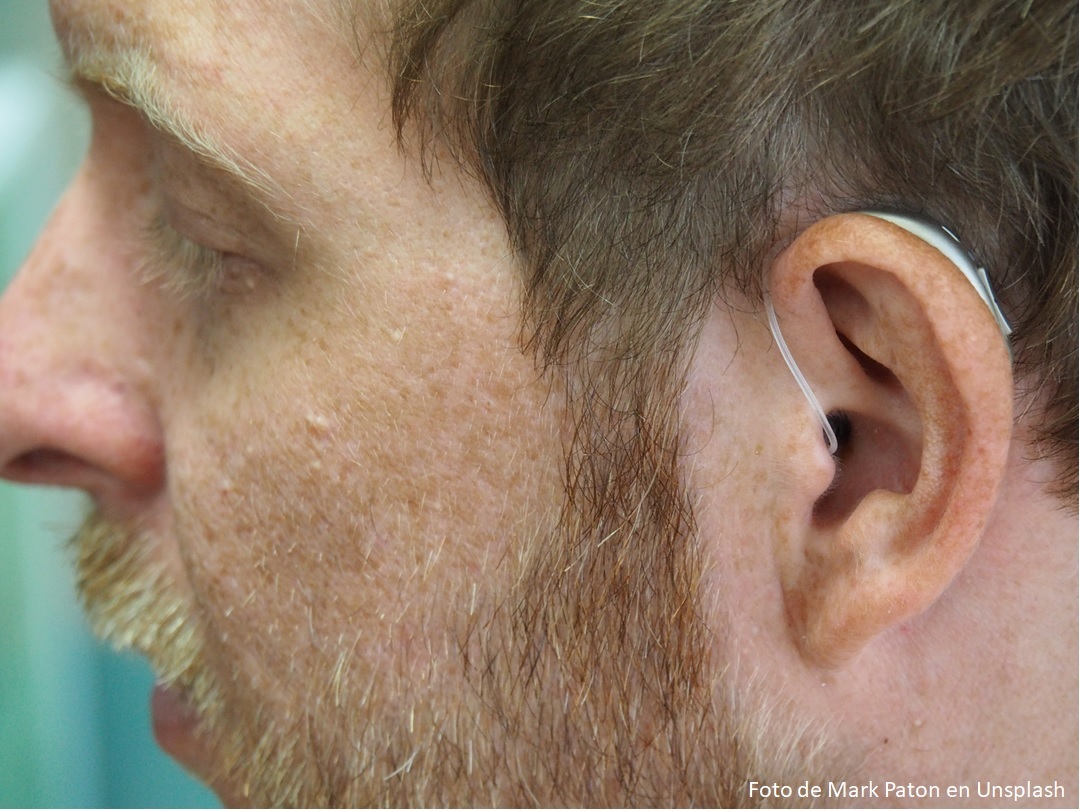Congenital sensorineural deafness X-linked, with inner ear malformation in a Mexican family
Sordera neurosensorial congénita con malformación de oído interno ligada al X en una familia mexicana

This work is licensed under a Creative Commons Attribution-NonCommercial-NoDerivatives 4.0 International License.
Show authors biography
Introduction. The pre-lingual deafness or hearing loss are of genetic cause in between 60% and 68% of cases, among these, between 20% and 40% are malformation of the inner ear. From the non-syndromic hearing loss cases that are linked to the X chromosome, seven types have been described. Among these inner ear malformations, incomplete cochlear partition type III is the less frequent.
Objective. Present the clinical genetical report of a Mexican family, with male individuals affected by congenital neurosensory deafness with inner ear malformation.
Materials and methodology. A study on a family in which nine members were affected by deafness was done. Four of them, plus a mother without manifestation, were studied through a general clinical study by a geneticist, an audiological study (otoscopy and audiometry) by an audiologist, and a computed tomography (CT) scan by a radiologist.
Results. The studied patients presented congenital neurosensory deafness, from severe to deep bilateral. Via the CT, the inner ear malformation was made clear. Three of the patients presented incomplete cochlear partition type III and one patient incomplete cochlear partition type I. Due to the clinical study and the family tree, it was diagnosed non-syndromic neurosensory deafness linked to X. The CT of the mother without manifestation did not show evidence of inner ear malformations.
Conclusion. The study by image is fundamental to define whether there is or not a presence of inner ear malformations in any patient with heading loss to be able to guide the therapeutics and the genetic counseling, as well as to make more accurate molecular studies.
Article visits 936 | PDF visits 401
- Van Camp G, Smith RJH. Hereditary Hearing Loss Homepage. September 2021. Disponible en: https://hereditaryhearingloss.org
- Shearer AE, Hildebrand MS, Smith RJH. Hereditary Hearing Loss and Deafness Overview, 1999. [Updated 2017 Jul 27]. In: Adam MP, Ardinger HH, Pagon RA, et al., editors. GeneReviews® [Internet]. Seattle (WA): University of Washington, Seattle; 1993-2021. Disponible en: https://www.ncbi.nlm.nih.gov/books/NBK1434/
- Sloan-Heggen CM, Bierer AO, Shearer AE, Kolbe DL, Smith RJH, Frees K, et al. Comprehensive genetic testing in the clinical evaluation of 1119 patients with hearing loss. Hum Genet. 2016;135(4):441-450. doi: https://doi.org/10.1007/s00439-016-1648-8
- Morton NE. Genetic epidemiology of hearing impairment. Ann N Y Acad Sci. 1991;630:16-31. doi: https://doi.org/10.1111/j.1749-6632.1991.tb19572.x
- Ocak E, Duman D, Tekin M. Genetic Causes of Inner Ear Anomalies: a Review from the Turkish Study Group for Inner Ear Anomalies. Balkan Medical Journal. 2019;36(4):206–211. doi: https://doi.org/10.4274/balkanmedj.galenos.2019.2019.4.66
- Cengiz FB, Yilmazer R, Olgun L, Sennaroglu L, Kirazli T, Alper H, et al.. Novel pathogenic variants underlie SLC26A4-related hearing loss in a multiethnic cohort. Int J Pediatr Otorhinolaryngol. 2017;101:167-171. doi: https://doi.org/10.1016/j.ijporl.2017.08.006
- D'Arco F, Sanverdi E, O'Brien WT, Taranath A, Blaser SI. The link between inner ear malformations and the rest of the body: what we know so far about genetic, imaging and histology. Neuroradiology. 2020;62(5):539-544. doi: https://doi.org/10.1007/s00234-020-02382-3.
- Sennaroğlu L, Bajin MD. Classification and Current Management of Inner Ear Malformations. Balkan Med J. 2017;34(5):397-411. doi: https://doi.org/10.4274/balkanmedj.2017.0367
- Sennaroğlu L, Sarac S, Ergin T. Surgical results of cochlear implantation in malformed cochlea. Otol Neurotol. 2006;27(5):615-23. doi: https://doi.org/10.1097/01.mao.0000224090.94882.b4
- Mazón M, Pont E, Montoya-Filardi A, Más-Estellés F. Inner ear malformations: a practical diagnostic approach. Radiologia. 2017;59(4):297-305. doi: https://doi.org/10.1016/j.rx.2016.09.009
- Tekin AM, Matulic M, Wuyts W, Assadi MZ, Topsakal V. A New Pathogenic Variant in POU3F4 Causing Deafness Due to an Incomplete Partition of the Cochlea Paved the Way for Innovative Surgery. Genes. 2021;12(5):613. doi: https://doi.org/10.3390/genes12050613.
- Menéndez I, Villamar M, Carrillo B, del Castillo I, Moreno F. Expresión fenotípica de una sordera familiar con Deleción del gen POU3F4. Rev Cub Pediatría. 1999;71(4):205-210. [Recuperado en 17 de septiembre de 2021]. Disponible en: http://scielo.sld.cu/scielo.php?script=sci_arttext&pid=S0034-75311999000400003
- Nance WE, Setleff R, McLeod A, Sweeney A, McConnell F. X-linked mixed deafness with congenital fixation of the stapedial footplate and perilymphatic gusher. Birth Defects. 1971;07(4):64-9. PMID: 5173351.
- Toriello HV, Reardon W, Gorlin RJ. Hereditary Hearing Loss and Its Syndromes (Oxford Monographs on Medical Genetics, 50). 2nd Edition. Oxford: Oxford University Press; 2004.
- Armienta AE. Enfermedades ligadas al cromosoma sexual X. Primera parte. Boletín Médico - Facultad de Medicina UAS. 2004;5(1).
- Armienta AE. Enfermedades ligadas al cromosoma sexual X. Segunda parte. Boletín Médico. Facultad de Medicina UAS. 2005;6(1).
- Corvino V, Apisa P, Malesci R, Laria C, Franzé A. X-Linked Sensorineural Hearing Loss: A Literature Review. Curr Genomics. 2018;19(5):327-338. doi: https://doi.org/10.2174/1389202919666171218163046
- Waryah A, Ahmed Z, Binder M, Choo DI, Sisk R, Shahzad M, et al. Molecular and clinical studies of X-linked deafness among Pakistani families. J Hum Genet. 2011;56:534–540. doi: https://doi.org/10.1038/jhg.2011.55
- O’Brien A, Aw WY, Tee HY, Naegeli K, Bademci G, Tekin M, et al. Confirmation of COL4A6 variants in X-linked nonsyndromic hearing loss and its clinical implications. Eur J Hum Genet. 2021. doi: https://doi.org/10.1038/s41431-021-00881-2
- Xing G, Yao J, Liu C, Wei Q, Quian X, Wu L, et al. GPRASP2, a novel causative gene mutated in an X-linked recessive syndromic hearing loss. J Med Genet. 2017;54(6):426-430. doi: https://doi.org/10.1136/jmedgenet-2016-104320
- Bennett RL, French KS, Resta RG, Doyle DL. Standardized human pedigree nomenclature: update and assessment of the recommendations of the National Society of Genetic Counselors. J Genet Couns. 2008;17(5):424-33. doi: https://doi.org/10.1007/s10897-008-9169-9
- García-Valdecasas Bernal J, Cardenete Muñoz G, Zenker Castro F. Guía de Práctica Clínica de Audiometría Tonal por Vía Aérea y Ósea con y sin Enmascaramiento. Auditio. 2017;4(3):85-85. doi: https://doi.org/10.51445/sja.auditio.vol4.2018.0059
- Mazzoli M, Van Camp G, Newton V, Giarbini N, Parving A. Recommendations for the Description of Genetic and Audiological Data for Families with Nonsyndromic Hereditary Hearing Impairment, Audiological Medicine. 2003;1(2):148-150. doi: https://doi.org/10.1080/16513860301713



